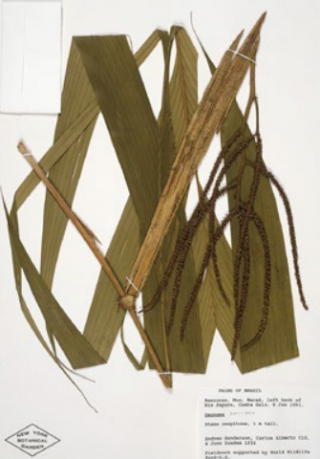The Palm Collection
Posted in Garden News on May 3 2019, by Plant Talk

The Palms of the World Gallery is one of the Conservatory’s 11 interconnected galleries, each featuring a different botanical habitat and specimens from around the globe. The Gallery displays New World and Old World palms, cycads, ferns, warmclimate monocots, and a variety of ground covers. Several specimens were cultivated from seed collected by NYBG horticulturists and scientists in the field.
As with all its permanent collections, the Garden is committed to the rigorous stewardship of the living plant collections in the Conservatory, entitled A World of Plants. Collections in glasshouses present a unique set of horticultural opportunities and challenges. The Conservatory provides protection from the elements, warm temperatures, and high humidity, so plants may be cultivated that would not survive outdoors in New York City. Adjustments are made throughout the year, including shading in summer to prevent temperatures inside the Conservatory from becoming too warm for visitors and unbearable for plants.
Because its habitats are designed specifically for palms and other warm-climate plants, the Conservatory requires its horticulturists to monitor plant vigor and ensure healthy soils through periodic rejuvenation and replenishment. Palms present a particular set of challenges when cultivated indoors because most varieties have primary growing points on top of their stems. Some inevitably grow too tall for the enclosure, requiring their removal and replacement with younger specimens.
The palm dome restoration provides NYBG curators the opportunity to perform essential horticultural work on the collection housed in the Palms of the World Gallery. Marc Hachadourian, NYBG’s Director of Glasshouse Horticulture and Senior Curator of Orchids, and Tropical Plant Curator Emerita Francisca Coelho developed a plan that preserves and protects important specimens while introducing new plants. Nearly 180 plants in the Gallery will be preserved in place or transplanted during the restoration process.
This article originally appeared as part of the Spring-Summer 2019 issue of Garden News, NYBG’s seasonal newsletter. For further reading, view the issue online and discover a sampling of stories about current programs and undertaking at the Garden.

